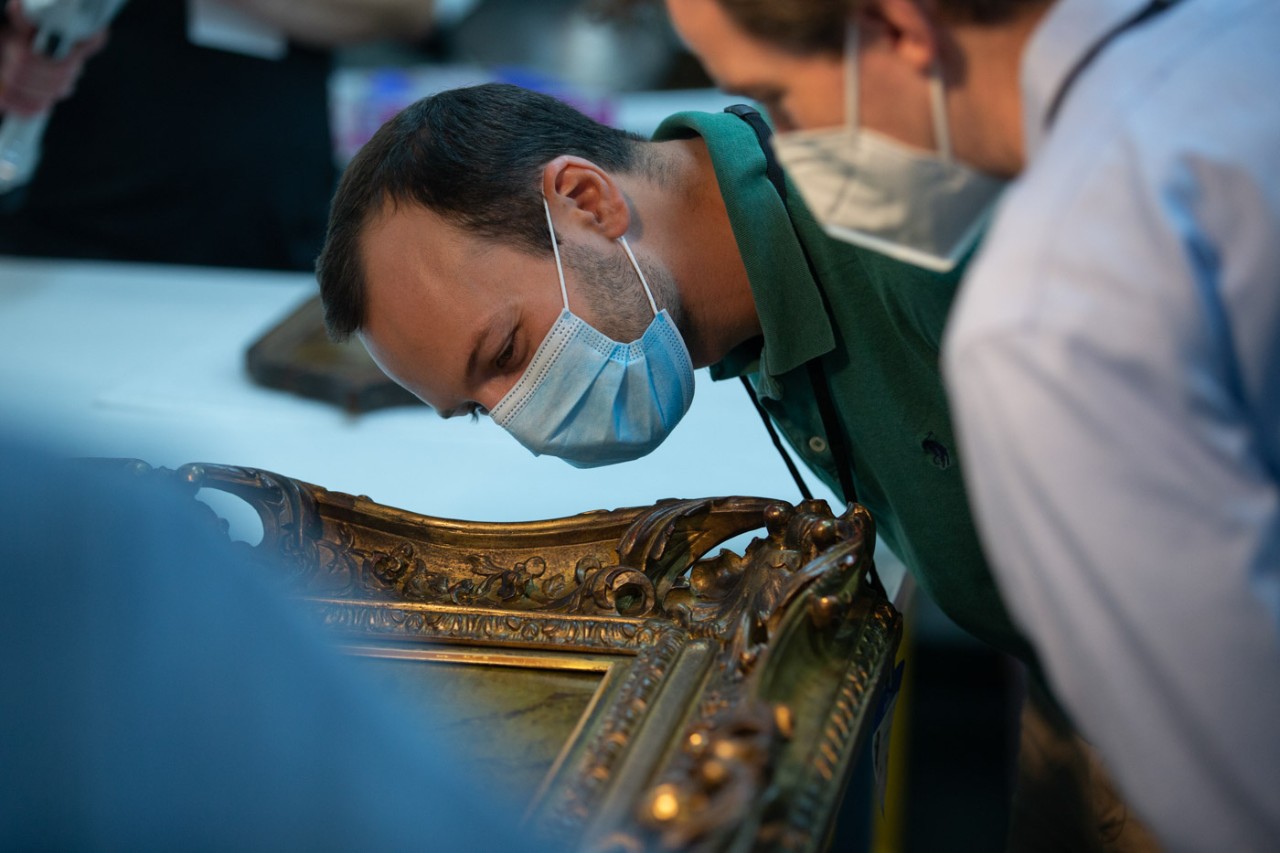
WaPo: Art meets science in analysis of ancient dancing horse
UC and Cincinnati Art Museum collaborate on mystery over Chinese masterpiece
The Washington Post highlighted a collaboration between the University of Cincinnati and the Cincinnati Art Museum to answer questions about an ancient Chinese masterpiece.
UC College of Arts and Sciences assistant professor Pietro Strobbia worked with museum conservator Kelly Rectenwald and East Asia curator Hou-mei Sung to determine if portions of the museum's dancing horse sculpture were authentic or added at a later date.

The terracotta dancing horse had a tassel on its forehead that aroused the curiosity of curators at the Cincinnati Art Museum. Photo/Cincinnati Art Museum/Gift of Carl and Eleanor Strauss, 1997.
In particular, Sung questioned the authenticity of a forehead tassel that gave the steed the look of a unicorn. Sung said this adornment is out of place compared to similar sculptures, which were commissioned to honor the dead at their funerals.
UC worked with Italy's Institute of Heritage Science to conduct a battery of molecular, chemical and mineralogical tests on the masterpiece. They determined the forehead tassel and two others were made of a plaster material, suggesting it had been added after the original terracotta statue was completed.
The findings were not altogether surprising given the age of the sculpture dating back as many as 1,300 years, conservator Rectenwald said.
"It was restored at least twice in its lifetime," she said. "Finding anything new about an artwork is really interesting."
Read the Washington Post story.
Featured image at top: UC assistant professor of chemistry Pietro Strobbia examines a painting in the conservator lab at the Taft Museum of Art. UC experts used scientific equipment to examine the provenance and authenticity of an ancient masterpiece at the Cincinnati Art Museum. Photo/Andrew Higley/UC Marketing + Brand
More UC chemistry in the news

UC assistant professor Pietro Strobbia examines data from Raman spectroscopy to help the Taft Museum of Art answer long-wondered questions about masterworks. Photo/Andrew Higley/UC Marketing + Brand
- Smithsonian: Chemistry reveals history of ancient dancing horse
- Science Daily: Using science to solve 1,300-year-old art mystery
- National Geographic (Indonesia): Mystery behind 1,300-year-old artwork solved with science
- Horsetalk (New Zealand): Tassel on centuries-old horse was added later
Related Stories
News Cincinnati loved in 2025
January 2, 2026
The story of prohibition bootlegger George Remus was among WLWT's favorite segments in 2025. UC Law Professor Christopher Bryant spoke with journalist Lindsay Stone about Remus using a temporary insanity defense during a murder trial.
What to know about this year’s big tax changes
January 2, 2026
Local 12 reported that taxpayers can expect some major changes this tax season. Gary Friedhoff, adjunct instructor at the University of Cincinnati’s Carl H. Lindner College of Business, recently spoke to Local 12 about how to avoid surprises.
Study finds police officers face higher long-term health risks
January 2, 2026
J.C. Barnes, a University of Cincinnati professor, is interviewed by Spectrum News about new research showing that the physical and psychological demands of law enforcement can contribute to earlier deaths.
